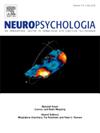Remembering the past affects new learning: The temporal dynamics of integrative encoding
IF 2
3区 心理学
Q3 BEHAVIORAL SCIENCES
引用次数: 0
Abstract
Memories link elements across event boundaries, integrating overlapping content experienced at different times and places. Such memory representations are thought to rely on memory integration mechanisms. The present study used multivariate pattern analysis (MVPA) of electroencephalographic (EEG) data to elucidate the temporal dynamics of integrative encoding memory processes. Memory integration was investigated with the associative inference task. Participants learned overlapping paired associates, AB and BC pairs, comprising a word and a picture (a face or a bird) and were later tested on the AC inferred associations. MVPA was used to measure the online reactivation of previously learned AB memories while encoding overlapping but new BC events. Reliable AB reactivation was observed approximately 1500 ms after the onset of the BC event. Participants (n = 29) were divided into two groups according to their AC performance: high and low memory integration. Interestingly, while both groups showed comparable levels of AB reactivation, the reactivation effects were associated with different behavioral consequences. For participants in the high memory-integration group, reactivation was predictive of later AC performance, suggesting that an integrated ABC representation was formed during BC learning. Conversely, for participants in the low memory-integration group, the reactivation of AB was negatively correlated with BC performance, indicating that reactivation of overlapping memories impaired new learning. The present study extends previous literature by revealing the temporal dynamics of the integrative encoding mechanisms and by providing an account of inter-individual differences in the capacity to integrate memories across distinct episodes.
回忆过去会影响新的学习整合编码的时间动态
记忆会跨越事件的界限将元素联系起来,整合在不同时间和地点经历的重叠内容。这种记忆表征被认为依赖于记忆整合机制。本研究使用脑电图(EEG)数据的多变量模式分析(MVPA)来阐明整合编码记忆过程的时间动态。通过联想推理任务对记忆整合进行了研究。受试者学习了由单词和图片(一张脸或一只鸟)组成的重叠配对联想(AB 和 BC 对),随后对 AC 推断联想进行了测试。在编码重叠但新的 BC 事件时,MVPA 被用来测量先前学习的 AB 记忆的在线再激活。在 BC 事件开始后约 1500 毫秒,可以观察到可靠的 AB 再激活。参与者(n = 29)根据其 AC 表现被分为两组:高记忆整合组和低记忆整合组。有趣的是,虽然两组的 AB 再激活水平相当,但再激活效应却与不同的行为后果相关联。对于高记忆整合组的参与者来说,重新激活可以预测以后的 AC 表现,这表明在 BC 学习过程中已经形成了一个整合的 ABC 表征。相反,对于低记忆整合组的参与者来说,AB 的重新激活与 BC 的表现呈负相关,这表明重叠记忆的重新激活会影响新的学习。本研究揭示了整合编码机制的时间动态,并解释了个体间在不同事件中整合记忆能力的差异,从而扩展了以往的文献。
本文章由计算机程序翻译,如有差异,请以英文原文为准。
求助全文
约1分钟内获得全文
求助全文
来源期刊

Neuropsychologia
医学-行为科学
CiteScore
5.10
自引率
3.80%
发文量
228
审稿时长
4 months
期刊介绍:
Neuropsychologia is an international interdisciplinary journal devoted to experimental and theoretical contributions that advance understanding of human cognition and behavior from a neuroscience perspective. The journal will consider for publication studies that link brain function with cognitive processes, including attention and awareness, action and motor control, executive functions and cognitive control, memory, language, and emotion and social cognition.
 求助内容:
求助内容: 应助结果提醒方式:
应助结果提醒方式:


